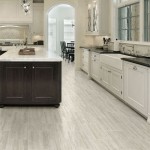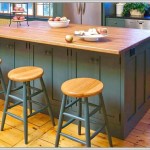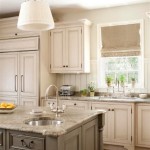Portable Kitchen Islands: A Comprehensive Guide
Portable kitchen islands represent a versatile and adaptable solution for enhancing kitchen functionality and storage. These mobile units offer supplemental workspace, storage, and seating options, catering to a wide range of kitchen layouts and design preferences. Unlike fixed islands, their mobility allows for flexible reconfiguration of the kitchen space to suit different needs and occasions. This article provides a comprehensive guide to portable kitchen islands, encompassing their benefits, key features, selection criteria, usage scenarios, and maintenance requirements.
Benefits of Utilizing a Portable Kitchen Island
The primary advantage of a portable kitchen island lies in its mobility. This flexibility allows homeowners to adapt their kitchen layout based on specific requirements. For example, the island can be positioned in the center of the kitchen for food preparation during meal times or moved to a corner to create more open space for entertaining guests. This adaptability is particularly valuable in smaller kitchens where maximizing available space is crucial. The portable nature eliminates the permanence of a fixed island, enabling adjustments to the kitchen's design without requiring extensive renovations.
Beyond mobility, portable kitchen islands offer significant storage benefits. Many models are equipped with drawers, cabinets, shelves, and even wine racks, providing ample space for storing kitchen utensils, cookware, pantry items, and other essential supplies. This additional storage capacity can help declutter countertops and cabinets, resulting in a more organized and efficient kitchen environment. The strategic placement of the island allows for easy access to frequently used items, streamlining the cooking process.
Portable kitchen islands can also function as supplemental seating or dining areas. Some models feature breakfast bars or drop-leaf extensions that can be used to create a casual eating space for quick meals or snacks. This feature is particularly appealing in kitchens that lack a formal dining area or where additional seating is needed for larger gatherings. The mobility of the island allows it to be easily repositioned to accommodate different seating arrangements and optimize the use of available space.
Furthermore, portable kitchen islands can be a more cost-effective alternative to fixed islands. The installation of a fixed island often involves significant construction work, including plumbing and electrical modifications, which can be expensive and time-consuming. In contrast, portable kitchen islands are typically ready to use upon delivery, requiring minimal assembly and no permanent alterations to the kitchen structure. This makes them a practical and budget-friendly option for homeowners seeking to enhance their kitchen's functionality without incurring substantial renovation costs.
Key Features to Consider When Selecting a Portable Kitchen Island
Selecting the right portable kitchen island requires careful consideration of various features and specifications. Size is a critical factor, as the island should be appropriately scaled to the dimensions of the kitchen and the available floor space. Larger islands offer more workspace and storage, but they can also overwhelm smaller kitchens. It is important to measure the kitchen area and consider the intended placement of the island to ensure a comfortable and functional fit. The height of the island should also be taken into account, particularly if it is intended for use as a breakfast bar or food preparation surface. Standard counter height is typically around 36 inches, but taller or shorter options may be preferred depending on individual preferences and needs.
The material used in the construction of the portable kitchen island is another important consideration. Common materials include wood, stainless steel, granite, and laminate. Wood islands offer a warm and traditional aesthetic, but they may require more maintenance to prevent damage from moisture and spills. Stainless steel islands are durable and easy to clean, making them a popular choice for modern kitchens. Granite countertops provide a high-end look and are resistant to heat and scratches, but they can be expensive and heavy. Laminate islands are a more affordable option, but they may not be as durable or heat-resistant as other materials. The selection of material should be based on the desired aesthetic, budget, and anticipated usage.
Storage options are a key feature to evaluate when choosing a portable kitchen island. The type and quantity of storage will depend on individual needs and preferences. Drawers are useful for storing utensils, knives, and other small items, while cabinets offer more space for larger cookware and pantry items. Shelves can be used to display decorative items or store frequently used items within easy reach. Wine racks are a popular addition for wine enthusiasts. The configuration of storage should be carefully considered to ensure that it meets the specific requirements of the kitchen. Locking casters are an essential feature for ensuring the stability and safety of the portable kitchen island. High-quality casters should be able to easily roll across different types of flooring and lock securely in place to prevent the island from moving during use. The casters should also be durable enough to support the weight of the island and its contents.
Additional features, such as towel bars, spice racks, and drop-leaf extensions, can enhance the functionality and convenience of a portable kitchen island. Towel bars provide a convenient place to hang kitchen towels, while spice racks offer easy access to commonly used spices. Drop-leaf extensions can be used to create additional workspace or seating when needed, and they can be folded down when not in use to save space. The inclusion of these features should be based on individual needs and preferences.
Usage Scenarios for Portable Kitchen Islands
Portable kitchen islands can be utilized in a variety of kitchen layouts and scenarios to enhance functionality and convenience. In small kitchens, a portable island can serve as a temporary workstation for food preparation, providing additional counter space when needed and easily moved out of the way when not in use. It can also function as a storage unit for kitchen essentials, helping to declutter countertops and cabinets. The island's mobility allows it to be positioned strategically to optimize workflow and maximize available space.
In larger kitchens, portable islands can be used to create a secondary work zone or a designated area for specific tasks. For example, the island could be used as a baking center, equipped with the necessary tools and ingredients for baking. Alternatively, it could be used as a beverage station, with a built-in wine rack and space for storing glasses and other bar accessories. The mobility of the island allows it to be easily repositioned to accommodate different tasks and activities.
Portable kitchen islands are also ideal for entertaining. They can be used as a serving station for food and drinks, providing a convenient place for guests to help themselves. The island can also be used as a bar, with ample space for mixing and serving cocktails. The mobility of the island allows it to be easily moved to different areas of the kitchen or even to other parts of the house, depending on the occasion. Furthermore, portable kitchen islands can be used in outdoor settings, such as patios or decks, to create an outdoor kitchen or bar area. The island can provide a convenient workspace for grilling and preparing food, as well as storage for outdoor cooking essentials. The mobility of the island allows it to be easily moved indoors during inclement weather or when not in use.
Portable islands can also be useful for individuals with mobility issues. The adjustable height of some models allows for comfortable use while seated, and the storage options provide easy access to kitchen essentials. The mobility of the island allows it to be easily repositioned to accommodate different needs and activities, making it a valuable asset for individuals with limited mobility. Even renters who don't want to invest in a permanent fixture or can't due to apartment rules find that adding a portable kitchen island can significantly upgrade their cooking and prep spaces.
Finally, a portable kitchen island can make a space look more put together, especially if the kitchen is small and open to other areas, like a living room. When chosen to match the overall theme and style of the space, the island makes the kitchen look less like an afterthought and more like a deliberate part of the home's design.

The Ultimate Guide To Kitchen Island Types Selection Costway Blog

How To Choose A Kitchen Island The Ultimate Guide Aosom

Your Ultimate Guide To Design Portable Kitchen Island Life

Kitchen Islands A Comparison Of Portable Vs Built In

Kitchen Islands A Comparison Of Portable Vs Built In

Kitchen Islands A Comparison Of Portable Vs Built In

Kitchen Islands A Comparison Of Portable Vs Built In

Kitchen Islands A Comparison Of Portable Vs Built In

Your Comprehensive Guide To Butcher Block Kitchen Islands

The Ultimate Guide To Making A Kitchen Island For Under 500
Related Posts








